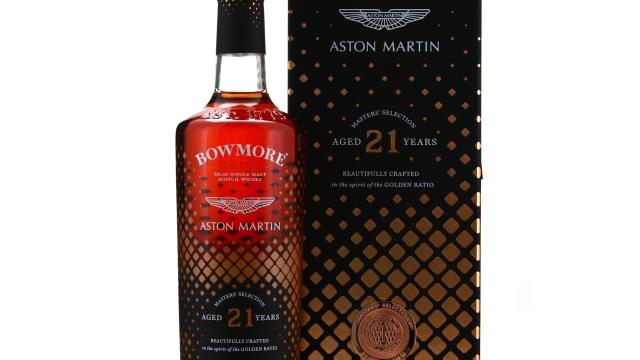American Icons: The Pursuit of Pappy Van Winkle

It may be a name that never pervades public consciousness quite like Jack Daniel’s, or a dynasty that will never set roots quite so deep as the Beams, but there is one family in American whiskey that is perhaps more important in the world of collectible bourbon than any other, Van Winkle.
In the latter part of the 19th century, a young charismatic Julian ‘Pappy’ Van Winkle began working as a salesman for liquor wholesaler, W. L. Weller and Sons. Fast-forward to 1910 and this young man was now owner of the company alongside his business partner, Alex Farnsely. W. L. Weller and Sons were were the biggest customers of the A. Ph. Stitzel distillery, and the two kept each other in business during National Prohibition, the latter owning a license to produce medicinal whiskey, and the former with an important distribution network earned through unwavering trust in its owner and his unending crusade to bottle only the finest whiskey.
The repeal of Prohibition allowed the two companies to formalise their partnership in 1933, and they opened a brand new distillery, Stitzel-Weller. Even as a distiller, Van Winkle’s desire for quality came before all else, and the distillery famously still displays a sign at its gates reading, “We make fine bourbon. At a profit if we can, at a loss if we must, but always fine bourbon.”
When Pappy passed away in 1965, he had already handed the reigns to his son, Julian Jnr., who intended and initially succeeded in running the company with the same ethos. Soon after Julian Jnr. resurrected their dormant old pre-Prohibition label called Old Rip Van Winkle. Their Old Rip Van Winkle brand was resurrected in 1972 by Julian Van Winkle Jnr. after the shareholders at his distillery, Stitzel-Weller, forced him to sell it to a company in New York called Somerset Imports. As a goodwill gesture, the new owners granted him continued access to an office there and first refusal on any surplus barrels in its warehouse. The dormant old pre-Prohibition label called Old Rip Van Winkle was all he still owned and he bottled it using Stitzel-Weller whiskey, predominantly in the same style of commemorative decanters that had brought such success to his former Old Fitzgerald brand over the previous twenty years.
When Julian II passed away in 1981, the kind offer of tenancy at Stitzel-Weller was not extended to his son, and Julian III was left to seek new premises in order to continue the family enterprise. Perhaps a blessing in disguise, he settled on the defunct Hoffman distillery in Lawrenceburg in 1983, the historic home of the Ezra Brooks brand and the size of which allowed him to vastly upscale his business. He renamed the site Old Commonwealth and transformed it into one of American whiskey’s most important independent bottling operations. Perhaps the most crucial development was his introduction to Gordon Hue, the owner of the legendary Cork n’ Bottle in northern Kentucky. Hue had previously approached Julian II with a less-than-well-received proposition to add prestige to his Stitzel-Weller bourbon by bottling it in cognac style bottles instead of the attentiondeflecting decanters. Finding Julian III more receptive, the idea quickly became a reality.
And so, in 1984 the Van Winkle Family Reserve was born. Just as the bourbon industry was approaching all time post-Prohibition low, Julian Van Winkle III launched what could be considered America’s first fully fledged premium whiskey brand. What seemed like madness was in fact a stroke of genius. Gordon Hue had distribution deals in Europe and crucially, Japan, which in contrast to the U.S. was falling in love with bourbon, particularly the “overaged” variety that Americans would turn their noses up at. Hue bought 14 and 16 year old Van Winkle bourbons for his eager export markets in a harmonious relationship that only ended with the revelation from Julian III that he no longer had the requisite age whiskey in his warehouses for him. However, bourbon history was not finished with either man yet.
Gordon Hue is another story, but Van Winkle continued to reap rewards with his impressively branded Stitzel-Weller bourbon. As he entered the 1990s, he diversified his portfolio, purchasing the Medley rye whiskey from United Distillers which would become the lauded Van Winkle Family Reserve Rye, and high quality casks from Heaven Hill which became new brands such as Nathan Stones. The latter was another release for the burgeoning Japanese market, which Van Winkle regained access to through an agent named Marci Palatella. By the late 90s, with his warehouses sufficiently replenished with well-aged stock, Julian III launched the 20 and 23 year old bourbon, which he named the Pappy Van Winkle Family Reserve after his legendary grandfather, Julian Snr.
Despite his success, there were hazards on the horizon. The Stitzel-Weller distillery was closed by United Distillers in 1992, and Van Winkle was fast approaching a tipping point where he would run out of wheated bourbon for his 10 and 12 year old labels. Crucially, the Buffalo Trace distillery was already producing just such a product for his family’s old W.L. Weller bourbons. In 2002, Julian III and his son Preston entered into a partnership with the Frankfortbased distillery that would see production of their acclaimed brands moved there, securing the future for what is considered by many to be the ‘holy grail’ of American whiskey collecting.



